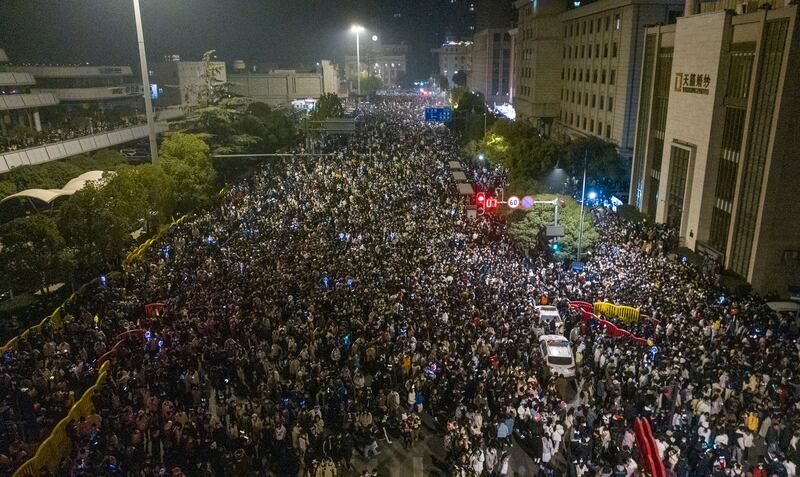Thousands gathered in central Wuhan on Saturday night to count down to the start of what many hoped would be a much better year after a “tough” 2022 filled with lockdowns and in December a major new outbreak of the coronavirus.
Many released balloons into the sky when the clocks struck midnight, as per tradition in the central Chinese city where the pandemic began three years ago, before grabbing selfies with their friends.
“In the past year, I feel that Covid-19 was very serious and some of my family members have been hospitalised,” 17-year-old Wuhan high school student, surnamed Wang, told Reuters from the riverside shortly after midnight.
“I hope they will be healthy in the new year. This is the most important thing.”
READ MORE
Some came in fancy dress and almost everyone present wore masks as the country sees a wave of Covid which accelerated after curbs were dropped and which has since infected large swathes of the population with deaths now reaching an estimated 9,000 a day according to UK-based health data firm Airfinity.

“I am afraid,” said a lady surnamed Jin, referring to the possibility of being reinfected with Covid-19.
“I was still afraid when I came out tonight, but I just wanted to come out, because everyone has come out.”
The crowds, including Jin, who were especially tightly packed in front of the old clock tower at Wuhan’s Hankou Customs House, were watched by large numbers of police officers, SWAT, unidentified plain-clothed personnel and other security workers.
In late November hundreds of people took part in lockdown demonstrations on the streets of cities across the country including Wuhan. Following those protests, China all but abandoned its strict “zero Covid” policy of stringent curbs.
“Those restrictions were in place for too long, so perhaps people were pretty unhappy,” said 24-year-old Wuhan resident surnamed Chen, who works in ecommerce. “It had been a long time since things were lively and vibrant.”
Police used loudspeakers at a number of locations, blasting out a short message on a loop telling people not to gather, to which people appeared to take little or no notice.
“I’m looking forward to the new year but I’m also very nervous,” said Wuhan resident Lily Zhao (37) who works as a kindergarten teacher. “I’m wondering when this epidemic will be completely over.”

In Shanghai, which like many Chinese cities in 2022 was put under a lengthy lockdown, many thronged the historic riverside walkway, the Bund.
“We’ve all travelled in from Chengdu to celebrate in Shanghai,” said Da Dai, a 28-year-old digital media executive who was travelling with two friends. “We’ve already had Covid, so now feel it’s safe to enjoy ourselves.”
While there were enough people on the Bund to warrant police directing the flow of those there, local F&B establishments were less busy than last year.
“It’s not nearly as busy as it was last year,” said a waiter at Lost Heaven restaurant close to the Bund.
Some tables were empty, which would not normally be the case on NYE he said, declining to be named as he was not authorised to speak to the media. The restaurant had over 200 bookings, but typically has 20-30 per cent more, he said.
“People have been afraid to come out since the Covid policy was loosened,” he said. “Hopefully it’ll be better next year.” – Reuters
(c) Copyright Thomson Reuters 2022











